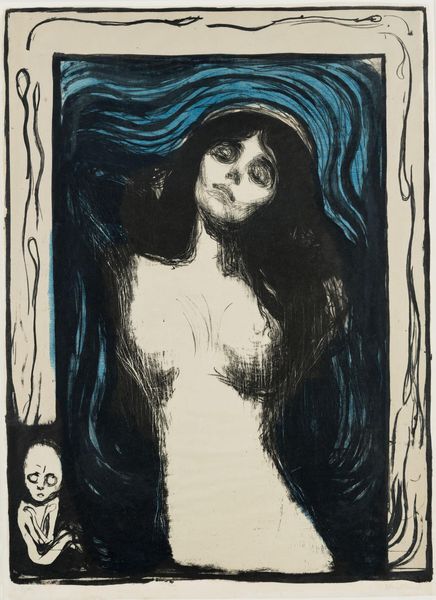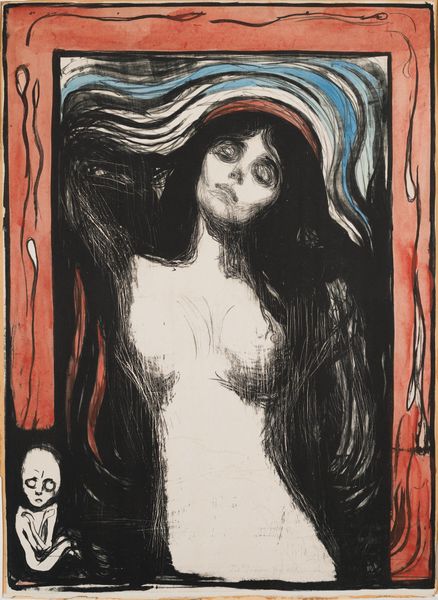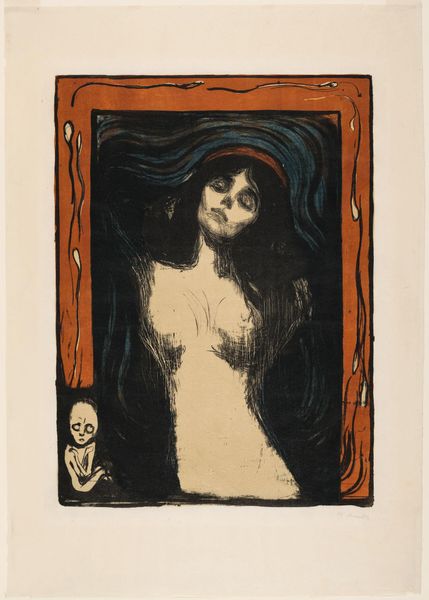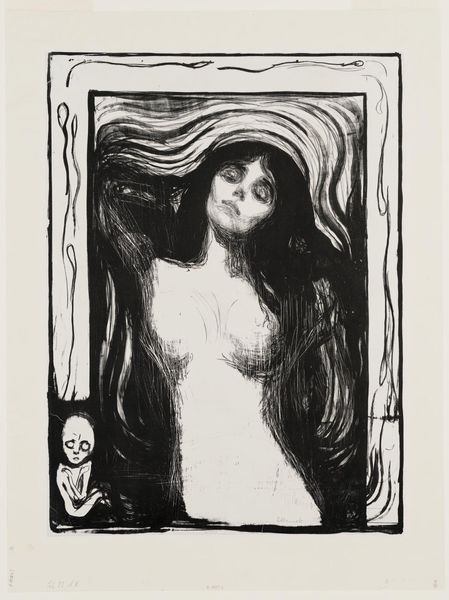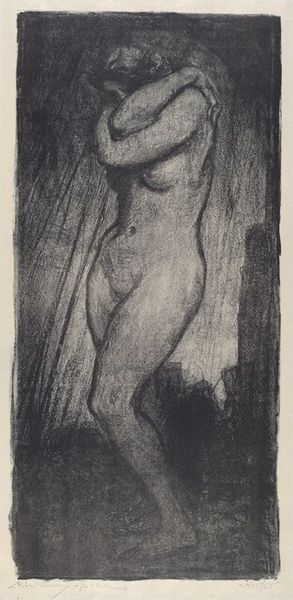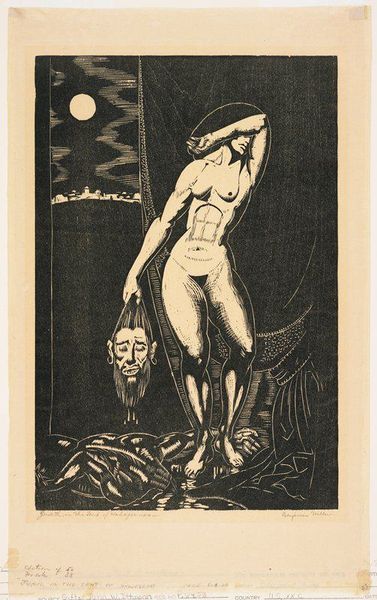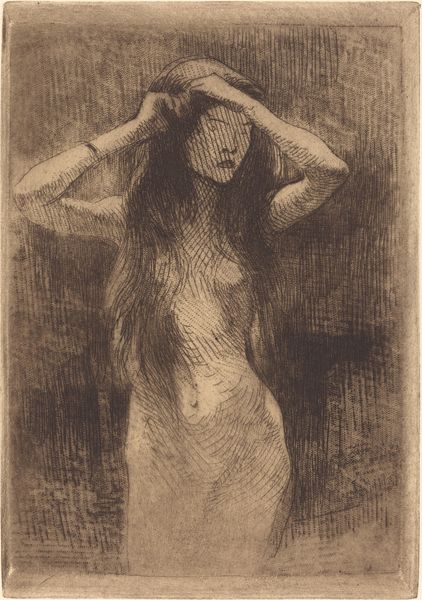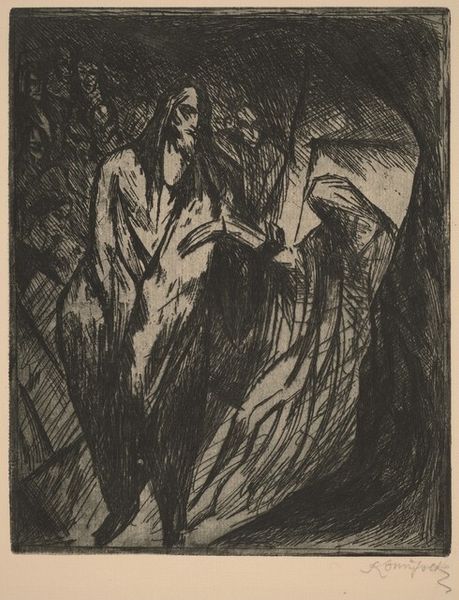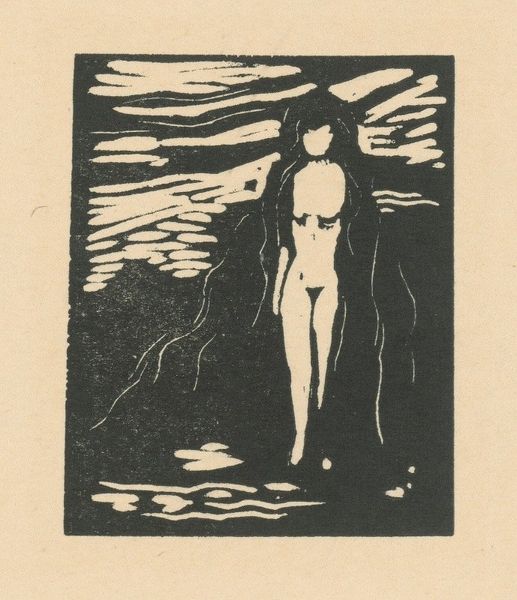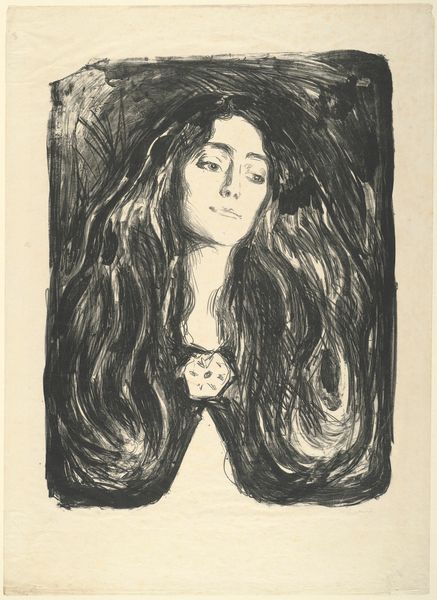
lithograph, print
#
lithograph
# print
#
expressionism
#
symbolism
#
nude
#
erotic-art
Dimensions: image: 60.3 x 44 cm (23 3/4 x 17 5/16 in.) sheet: 66.2 x 50.4 cm (26 1/16 x 19 13/16 in.)
Copyright: National Gallery of Art: CC0 1.0
Curator: Edvard Munch’s lithograph, "Madonna," created in 1895, presents a challenging, almost visceral take on a traditional subject. What’s your immediate response to it? Editor: Brooding. The contrast is dramatic, the subject pale, with that startlingly dark surround. There's an almost suffocating feel to the composition. Curator: Yes, Munch masterfully uses stark contrasts and symbolism throughout his work. "Madonna," though titled traditionally, radically departs from typical depictions. It invites discussions around female sexuality and existential themes that course through fin-de-siècle anxieties. Editor: Precisely, the title clashes with the overtly erotic imagery. Consider its early reception: a direct confrontation with conservative social norms of the era. The image itself became a political lightning rod. What were the contemporary exhibition strategies around the work? Did its perceived obscenity bolster its marketability? Curator: Good questions! It existed within a context grappling with modern understandings of art and the human form. It pushes beyond conventional beauty to reveal a woman almost in a trance, lost perhaps in either pleasure or pain. The fetus-like figure in the corner suggests a simultaneous conception of life and death. Editor: The small figure brings up further complexities. One might examine it through the lens of reproductive rights and anxieties about maternity pervasive at the time, not to mention current issues about women’s control of their own bodies. There’s a visual push-pull occurring on issues around female identity. Curator: Absolutely, the way he portrays her makes us question our preconceived notions. The halos typically symbolizing holiness become these dark swirling eddies that seem to drown her. What would you say are the key takeaways? Editor: “Madonna” underscores art’s power as both reflection and critique. It prompts viewers to engage in ongoing cultural dialogue, making historical artwork so very relevant today. Curator: I agree, viewing “Madonna” encourages the challenging but vital work of re-examining accepted ideas to seek fresh insights in our own time.
Comments
No comments
Be the first to comment and join the conversation on the ultimate creative platform.

